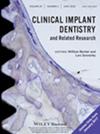Insights Into Early and Late Dental Implant Failures in Veterans—A Retrospective Cohort Analysis
Abstract
Introduction
While numerous studies have examined overall dental implant failure, only a few have focused on the distinct risk factors associated with early (within 6 months of post-implantation) and late (after 6 months of post-implantation) failures, especially in the veteran population. Consequently, understanding the nuances of early and late DIFs specific to veterans is necessary to improve clinical decision-making and enhance VA dental surgeons' ability to mitigate failure risks.
Methods
Electronic health records (EHRs) were obtained between January 1, 2000, and December 1, 2021, for veteran patients aged 18 years or older and those who received a dental implant. Univariable analysis was initially conducted to identify significant risk factors, which were subsequently controlled for in multivariable analysis. A mixed-effect logistic regression model was then used to estimate the odds ratio of early/late failures. The intra-class correlation coefficient (ICC) was calculated using a mixed-effects model to assess the proportion of variance attributable to patient-level clustering.
Results
A total of 132 675 US veterans with 468 496 dental implants were included in the multivariable models. Within this cohort, 13 492 failures were reported in 9423 unique veterans, resulting in a 7.1% failure rate over 21 years. Adjusted odds ratios indicated that being 70 years or older at the time of implant placement, Asian race, having osteoporosis, and undergoing reimplantation were significantly associated with increased odds of early implant failure. In contrast, patients aged 40–60 years at the time of placement, African American race, active periodontitis, and alendronate use were associated with increased odds of late implant failure. The ICC of 86% calculated for the cohort indicated a high level of patient-level clustering.
Conclusion
Veterans with active periodontitis and those using Alendronate exhibited markedly increased odds—approximately 139% and 114% respectively—for late implant failures. Conversely, veterans aged 70 years or older and those undergoing reimplantation had 257% and 89% increased odds respectively in the early failure cohort. The high ICC value for this cohort indicated that the outcome of implant placement was strongly influenced by the patients' prior history of implant failure or success.

 求助内容:
求助内容: 应助结果提醒方式:
应助结果提醒方式:


